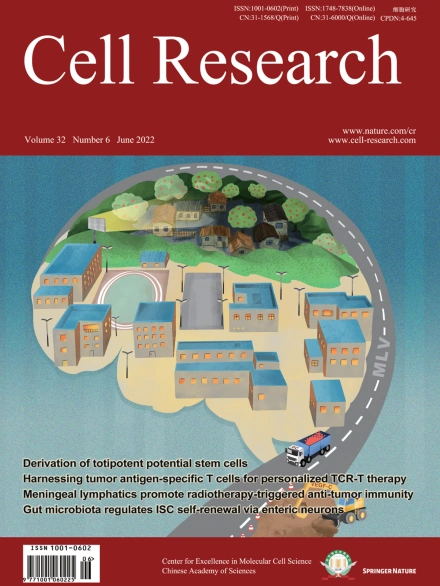
Advanced Search
Submit Manuscript
Advanced Search
Submit Manuscript
Volume 32, No 6, Jun 2022
ISSN: 1001-0602
EISSN: 1748-7838 2018
impact factor 17.848*
(Clarivate Analytics, 2019)
Volume 32 Issue 6, June 2022: 555-569
Gut microbiota drives macrophage-dependent self-renewal of intestinal stem cells via niche enteric serotonergic neurons
Pingping Zhu1,2,3,†,* , Tiankun Lu1,4,† , Jiayi Wu1,5,† , Dongdong Fan6,† , Benyu Liu1,7 , Xiaoxiao Zhu6 , Hui Guo1 , Ying Du1 , Feng Liu8 , Yong Tian4,6,* , Zusen Fan1,4,*
1CAS Key Laboratory of Infection and Immunity, CAS Center for Excellence in Biomacromolecules, Institute of Biophysics, Chinese Academy of Sciences, Beijing, ChinaLgr5+ intestinal stem cells (ISCs) reside within specialized niches at the crypt base and harbor self-renewal and differentiation capacities. ISCs in the crypt base are sustained by their surrounding niche for precise modulation of self-renewal and differentiation. However, how intestinal cells in the crypt niche and microbiota in enteric cavity coordinately regulate ISC stemness remains unclear. Here, we show that ISCs are regulated by microbiota and niche enteric serotonergic neurons. The gut microbiota metabolite valeric acid promotes Tph2 expression in enteric serotonergic neurons via blocking the recruitment of the NuRD complex onto Tph2 promoter. 5-hydroxytryptamine (5-HT) in turn activates PGE2 production in a PGE2+ macrophage subset through its receptors HTR2A/3 A; and PGE2 via binding its receptors EP1/EP4, promotes Wnt/β-catenin signaling in ISCs to promote their self-renewal. Our findings illustrate a complex crosstalk among microbiota, intestinal nerve cells, intestinal immune cells and ISCs, revealing a new layer of ISC regulation by niche cells and microbiota.
https://doi.org/10.1038/s41422-022-00645-7